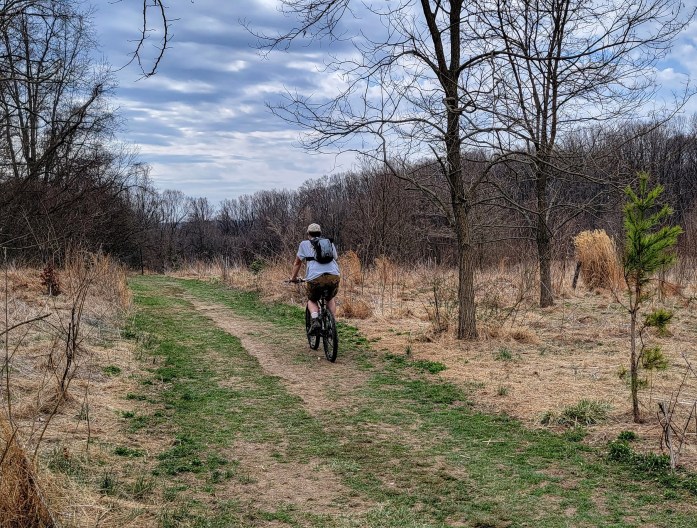Palmer State Park is one of Maryland’s smaller parks, with just 555 acres adjacent to Deer Creek. The park’s three trails in the park offer a view into the history of the communities and industry that thrived in the area during the 19th and early 20th centuries, as you hike under second growth forest. In the 1960s, Gerald and Ruth Palmer donated 463 acres for use as a public park; the park’s historic industrial sites include remnants of the Husband Flint Mill and Deer Creek Iron Works.
For our hike in late March, we started took the right-most trailhead of the Hornbeam Trail — which is the only trail in from the parking lot. The Hornbeam Trail is named after, apparently, a very cool old tree, unique to its environment. I wish I’d read the trail description better when we were there — I would have gone looking for it.


From the Hornbeam Trail, we took a right onto the Ironworks Trail, following it until we came to Flint Mill Trail, turning right onto it. We followed the Flint Mill Trail, descending the mountainside down to Deer Creek; we encountered lots and lots of daffodils, a treat in March!
We continued on the trail, following Deer Creek to our right to the old forge. The forge was built in the mid-1800s and became a thriving community center with a general store and gristmill until the iron works ceased operations in 1878. The old foundation and covered bridge abutments are still visible today.





After the forge, the trail starts heading back up the mountain, following the contour of the hillside. As we drew closer to the top, we encountered the Ironworks Trail, and turned left onto it so that we could pass by the old quarry sites where quartz was mined out of the ground to make ceramics. However, had we continued on to the right (and the shorter route back to the parking lot), we would have encountered the more impressive ruins of the Husband Flint Mill.
Originally built in the late 1800s by Joshua Husband, this historic mill was purchased by George J. Kroeger and rebuilt in 1909. The mill ground quartz mined from quarries in the surrounding hills for use in porcelain dishes and pottery. Before being dismantled in the 1920s, the mill was one of the best-equipped mills in the state of Maryland. Two kilns, a chimney and part of the mill office are still visible today.


Know before you go: For the optimal route to see the various ruins around the park, start with the Hornbeam Trail trailhead on the right, and keep taking rights all the way through back to the parkinglot.
Getting there: 3209 Forge Hill Rd, Street, MD
Hours: daylight
Website: Palmer State Park and trailmap









